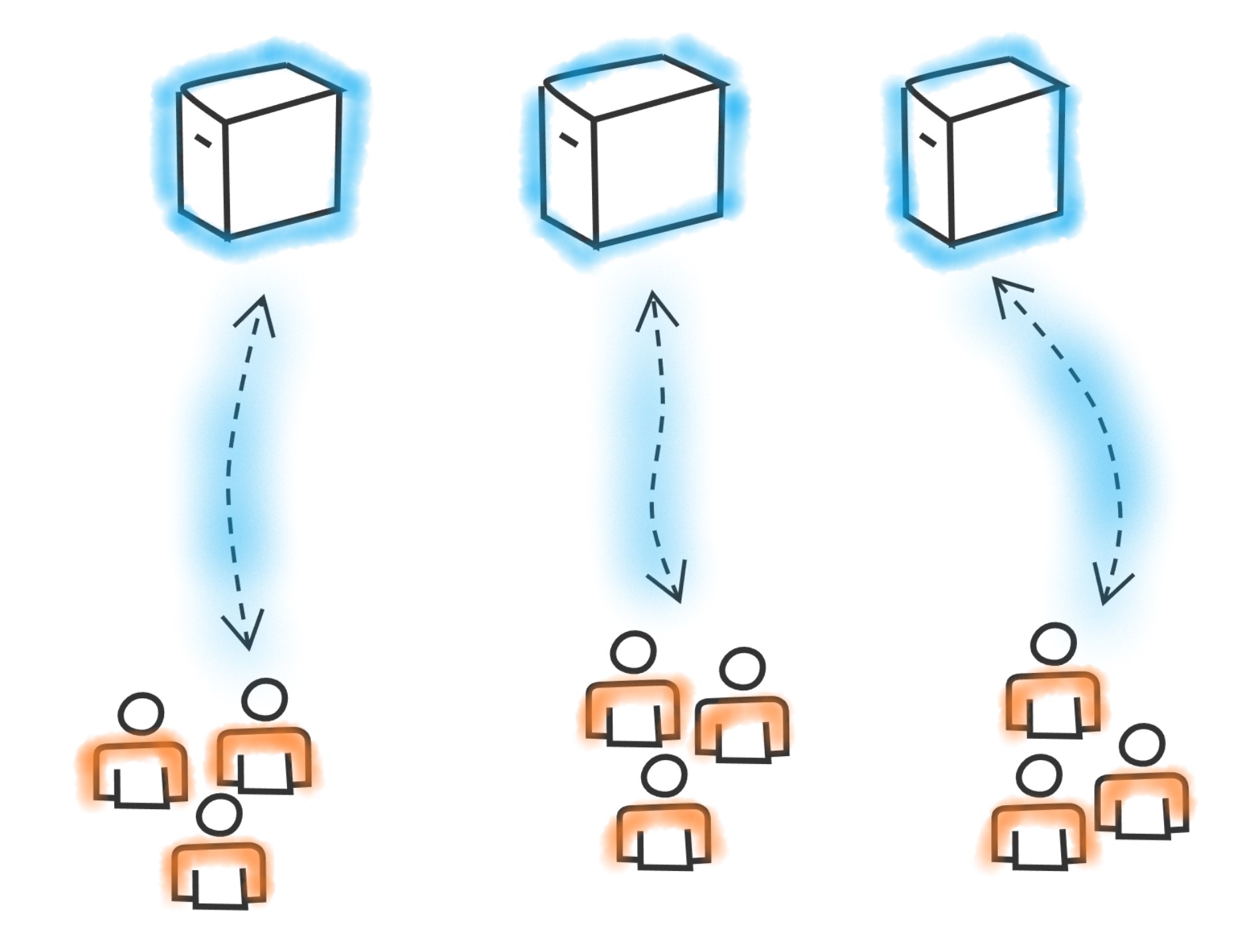WebSockets

WebSockets is a protocol that provides full-duplex communication channels over a single TCP connection. It is commonly used by single-page apps (SPAs) and mobile apps, to add server-push based functionality, which usually improves performance. Also, it is used for applications that require real-time communication.
To work with WebSockets, NBomber provides NBomber.WebSockets plugin.
This package is experimental and might be subject to breaking API changes in the future. While we intend to keep experimental packages as stable as possible, we may need to introduce breaking changes.
To install NBomber.WebSockets package you should execute the following dotnet command:
dotnet add package NBomber.WebSockets
WebSockets API
NBomber.WebSockets plugin provides WebSocket type that is wrapper over native ClientWebSocket that provides extenions to simplify WebSockets handling.
SendandReceivemethods use reusable memory pools to reduce memory allocations.Receivemethod follows Pull-based semantics that simplifies writing load test scenarios due to the liner composition of the request/response handling.
var scenario = Scenario.Create("web_sockets", async context =>
{
using var websocket = new WebSocket(new WebSocketConfig());
var connect = await Step.Run("connect", context, async () =>
{
await websocket.Connect("ws://localhost:5231/ws");
return Response.Ok();
});
var ping = await Step.Run("ping", context, async () =>
{
await websocket.Send(payload);
return Response.Ok(sizeBytes: payload.Length);
});
var pong = await Step.Run("pong", context, async () =>
{
using var response = await websocket.Receive();
return Response.Ok(sizeBytes: response.Data.Length);
});
var disconnect = await Step.Run("disconnect", context, async () =>
{
await websocket.Close();
return Response.Ok();
});
return Response.Ok();
});
You can find the complete example by this link.
Connect
This method should be used to connect to a WebSocket server asynchronously.
public Task Connect(string url, CancellationToken cancellationToken = default);
public Task Connect(Uri uri, CancellationToken cancellationToken = default);
Example:
using var websocket = new WebSocket(new WebSocketConfig());
await websocket.Connect("ws://localhost:5231/ws");
Send
This method should be used to send data on WebSocket asynchronously.
public ValueTask Send(string text, CancellationToken cancellationToken = default);
public ValueTask Send(ReadOnlyMemory<byte> payload, CancellationToken cancellationToken = default);
Example 1: in this example, we will send a plain text. The text will be encoded using UTF8 encoding.
var step = await Step.Run("send", context, async () =>
{
string command = "ping";
await websocket.Send(command);
return Response.Ok(sizeBytes: command.Length);
});
Example 2: in this example, we will send a binary payload.
var step = await Step.Run("send", context, async () =>
{
byte[] data = Encoding.UTF8.GetBytes("pong");
await websocket.Send(data);
return Response.Ok(sizeBytes: data.Length);
});
Receive
This method should be used to receive a WebSocket message from the connected WebSocket asynchronously.
This method returns WebSocketResponse that should be disposed of after usage.
public ValueTask<WebSocketResponse> Receive(CancellationToken cancellationToken = default);
Example: in this example, we will receive a WebSocket message.
var ping = await Step.Run("send", context, async () =>
{
await websocket.Send(payload);
return Response.Ok(sizeBytes: payload.Length);
});
var pong = await Step.Run("receive", context, async () =>
{
using var response = await websocket.Receive();
return Response.Ok(sizeBytes: response.Data.Length);
});
Close
This method should be used to close WebSocket connection asynchronously.
public Task Close(WebSocketCloseStatus closeStatus = WebSocketCloseStatus.NormalClosure, CancellationToken cancellationToken = default);
Example:
var ping = await Step.Run("disconnect", context, async () =>
{
await websocket.Close();
return Response.Ok();
});
Original ClientWebSocket
NBomber.WebSockets plugin is basically a wrapper over native ClientWebSocket that provides extenions to simplify WebSockets handling. If you need to work with the original ClientWebSocket, you can use public Client property. All native methods are available for usage.
using var websocket = new WebSocket(new WebSocketConfig());
var originalClient = websocket.Client;
